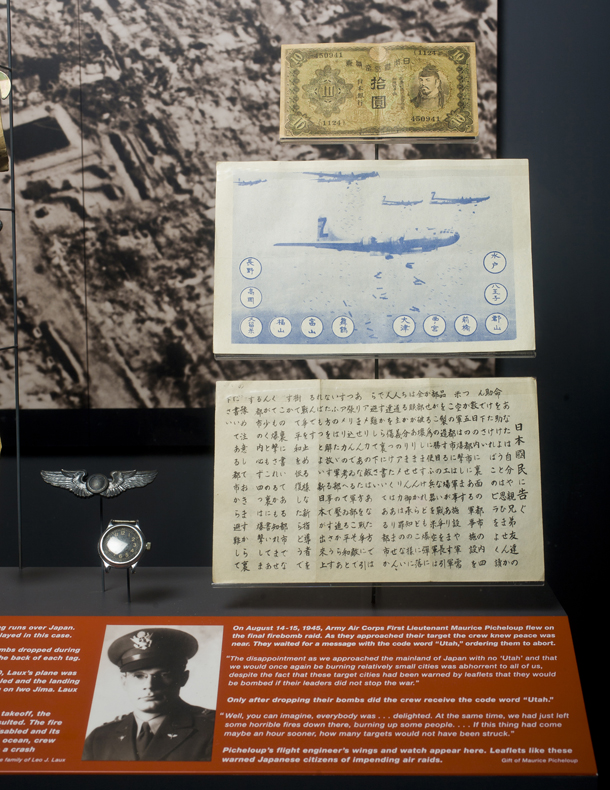Artifact Spotlight – Leaflet dropped on Japanese cities

Gift of Maurice Picheloup, The National WWII Museum Inc., 2000.252
Although the atomic bombings of Hiroshima and Nagasaki in August 1945 hastened the end of World War II, the fighting did not stop immediately. As the Japanese government debated surrender, the Allies kept up the pressure through the continued fire-bombing of Japanese cities by B-29 Superfortresses. The last of these bombing raids took off from Guam on the evening of August 14th, only a few hours before the Japanese surrendered. Army Air Corps 1st Lieutenant Maurice Picheloup of New Orleans was on this raid.
Prior to the raid, American bombers dropped thousands of leaflets like this one over eleven Japanese cities. The leaflet, the brainchild of General Curtis E. LeMay, informed Japanese civilians that the cities named on the paper would be destroyed by American bombers within seventy-two hours. The leaflet served two purposes: to allow Japanese civilians a chance to flee the imminent bombing and to point out the Japanese military’s weakness. It reads in part, “This advance notice will give your military authorities ample time to take necessary defensive measures to protect you from our inevitable attack. Watch and see how powerless they are to protect you.”
Picheloup and the rest of his bomb group took off on the evening of August 14th knowing that the war would end soon. All the way to the target, the bomber crews listened for the code word “Utah,” which meant that the mission was aborted due to the Japanese surrender. Flying in the last plane in the formation, Picheloup saw four Japanese cities burning as a result of the bombers flying ahead of him. He wrote later, “The disappointment as we approached the mainland of Japan with no ‘Utah’ and that we would once again be burning relatively small cities was abhorrent to all of us.” He did, however, take comfort in the knowledge that the leaflets might save the lives of some Japanese civilians.
Picheloup’s plane dropped its bombs at 3:03 am on August 15th, 1945. As he flew back to Guam, with the fires from the four Japanese cities still visible over the Pacific, Picheloup received the code word “Utah.” World War II was officially over.
- Posted :
- Post Category :
- Tags : Tags: End of War
- Follow responses to this entry through the RSS 2.0 feed. You can skip to the end and leave a response. Pinging is currently not allowed.




Leave a Reply